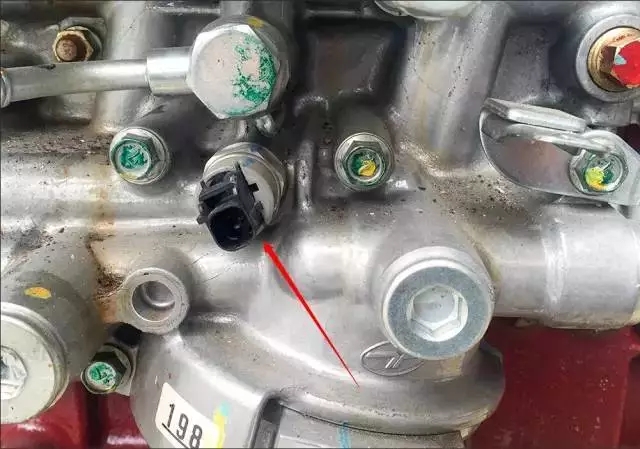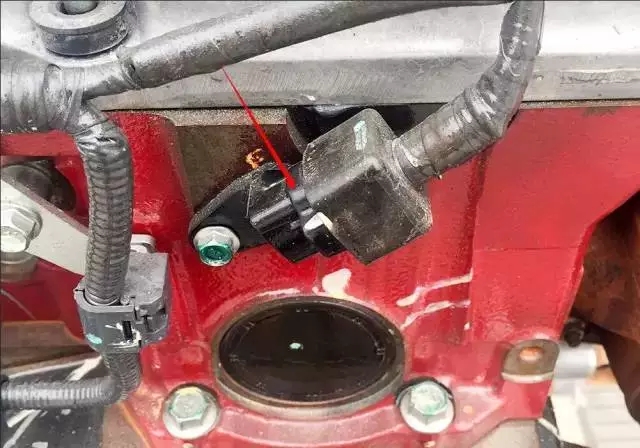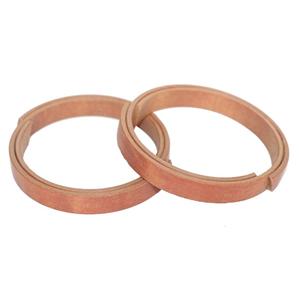Do you know the functions of the sensors and solenoid valves on the excavator?
Do you know the functions of the sensors and solenoid valves on the excavator?
For environmental protection, excavators are now mostly EFI vehicles. Diggers often encounter various alarm codes, and these alarms are mostly caused by sensor or solenoid valve failures. Here are the ten sensor and solenoid valve positions and functions on the engine.

Sensors and solenoid valves on the engine


EGR valve
Role: EGR valve is a variable opening electromagnetic proportional valve controlled by ECU. The ECU makes judgments based on information such as engine speed, water temperature, and common rail pressure, and adjusts the opening degree of the EGR valve so that an appropriate amount of exhaust gas enters the combustion chamber again, so as not to affect the engine power and the purpose of reducing the content of nitrogen oxides in emissions.

Ejector connector
Function: It is used to maintain the communication of control signals between the solenoid valve and the ECU in the injector. The ECU sends instructions to the injector solenoid valve based on the received throttle sensor, speed, water temperature, common rail pressure, and other information to control the injection start time and stop time to achieve the purpose of adjusting the fuel advance angle and injection, thereby controlling the engine's Speed and torque.

Common rail pressure sensor
Function: It is used to feedback the high-pressure diesel pressure signal in the common rail cavity to the ECU. Due to the high-pressure injection used in the common rail diesel control system, the injection pressure is more than 10 times higher than that of a general direct injection engine. Therefore, the ECU will monitor the diesel pressure in the common rail cavity in real time, and make judgments based on the feedback pressure signal and other feedback signals, and issue command signals to the control units such as the injector solenoid valve, EGR solenoid valve and SCV valve.

Oil pressure switch
Function: A normally closed pressure switch. The engine oil pressure is detected and the signal is fed back to the CPU. After receiving the abnormal signal, the CPU will control the alarm on the display and the buzzer will alarm. If the signal of low oil pressure occurs during the engine start, in addition to the alarm, the engine will be controlled to stop automatically.

CPU main speed sensor
Role: Used to feed back the engine speed signal to the CPU. After receiving the feedback signal from the main speed sensor, the CPU compares with the speed set in the program to determine whether the engine speed is normal and the engine load status is normal. It also uses other feedback signals to make correlations to the engine and the hydraulic system. control. Under abnormal conditions, the hydraulic system will be controlled to reduce horsepower or stop the engine.
Boost pressure sensor
Function: It is used to feed back the intake pressure after being supercharged by the supercharger to the ECU. After receiving the feedback signal from the boost pressure sensor, the ECU determines whether the intake system is normal. And combined with other feedback signals to control the engine's injection amount, EGR opening, SCV valve and so on. Under abnormal conditions, the engine will be controlled to reduce output.
SCV valve
Role: Used to control the inlet diesel flow of the diesel fuel pump of the engine. The SCV valve is an inverse proportional electromagnetic proportional valve controlled by the ECU. The ECU receives signals such as engine speed, water temperature, common rail pressure, and suction pressure, and derives the command current to the SCV valve to control the opening of the SCV valve. The purpose of the diesel flow is to regulate the common rail pressure. Abnormal conditions can cause the engine output to drop or even stop.

Fuel temperature sensor
Function: temperature sensor signal control, fuel heater and protection diesel generator. If the sensor fails, it will affect the performance of the engine.

Engine main speed sensor
Function: The engine main and auxiliary speed sensors are used to feed back the engine speed, crank angle, and cam shaft angle signals to the ECU, so that the ECU can correctly judge the timing information. The two sensors verify each other. If a single sensor loses the feedback signal, the engine can still be used with reduced output. If both sensors lose the signal at the same time, the engine will not start.

Timing gear sensor
Function: The engine main and auxiliary speed sensors are used to feed back the engine speed, crank angle, and cam shaft angle signals to the ECU, so that the ECU can correctly judge the timing information. The two sensors verify each other. If a single sensor loses the feedback signal, the engine can still be used with reduced output. If both sensors lose the signal at the same time, the engine will not start.
If you are looking for engine parts, pls visit our online website http://www.wonepart.com/product-list/engine , you could find many items, and if you could not find pls email us info@wonepart.com our sales team will reply to you soon.
Reference: Journal of Construction Machinery and Maintenance




